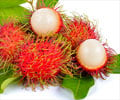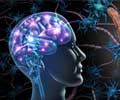Scientists may now be able to evaluate large numbers of fruit fly genes for a possible role in the formation of plaque-like protein aggregates within cells.

"Aggregate formations are closely linked to aging and brain diseases," said Sheng Zhang, Ph.D, a researcher involved in the work from the Research Center for Neurodegenerative Diseases, the Brown Foundation Institute of Molecular Medicine, the University of Texas Health Science Center at Houston. "We hope our study will not only help to uncover how the formation of aggregates is regulated in a cell, but also help find good drug-development targets. Then, we can find ways to slow down plaque formations during aging and prevent and treat aggregates-related brain diseases, which are a pressing challenge to a modern society that is enjoying a longer life expectancy."
To make this advance, scientists examined every known gene in the fruit fly genome and identified a small group of genes (more than 70 percent of which have human counterparts) that likely play important roles in regulating the formation of plaque-like protein aggregates within cells. They then expressed the Huntington's disease protein in the fruit fly and found that it caused plaque-like protein aggregates in different fly tissues, including the brain and in cultured cells. The plaque-like protein aggregates were similar in appearance and biochemical properties to those found in tissues of people with Huntington's disease. The scientists employed two methods to survey a large number of genes: automated microscopy for imaging the plaque-like protein aggregates in the cells at a high-magnification level, and a computer-assisted method to quantify information on the aggregates in each tested sample. By integrating these methods, researchers were able to quickly examine all the approximately 14,000 fruit fly genes and identify the ones that are important for regulating the formation of aggregates by the mutant Huntington protein.
"The genetic overlap between humans and fruit flies continues to be a treasure trove for scientific discoveries," said Mark Johnston, Editor-in-Chief of GENETICS. "One hundred years ago, no one would have ever thought that research on a fly's brain could lead to medicines for human brains, but this research is a perfect example of this possibility."
Source-Medindia
GPL











